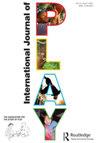儿童的打闹游戏:发展和进化的观点
IF 1.2
Q3 EDUCATION & EDUCATIONAL RESEARCH
引用次数: 2
摘要
人类儿童的游戏战斗和追逐——通常被称为混战游戏,或RTP或R&T——是一种常见的游戏形式,也是许多(尤其是哺乳动物)非人类物种的游戏最明显的对应形式。与通常受到老师和家长鼓励的对象游戏、假装游戏和社会戏剧游戏不同,游戏打斗被以一种更加矛盾的方式看待。它在发展中的作用,以及应以积极还是消极的眼光看待这一点,仍在继续辩论。在这里,我们回顾了从非人类物种的游戏打斗研究中可能获得的见解,人类的主要发展趋势,定义和测量问题,文化差异,以及与适应性行为相关的经验数据。最后,对理论问题和未来的研究重点进行了思考。与非人类物种,亲子RTP和同伴RTP的研究一致的主题是,RTP经验对于情绪控制和在竞争或冲突的情况下学习克制很重要。本文章由计算机程序翻译,如有差异,请以英文原文为准。
Play fighting (rough-and-tumble play) in children: developmental and evolutionary perspectives
ABSTRACT
Play fighting and chasing in human children – often referred to as rough-and-tumble play, or RTP or R&T – is a common form of play, and one that has the most obvious correspondence to play in many (especially mammalian) non-human species. Unlike object, pretend and sociodramatic play, generally encouraged by teachers and parents, play fighting is viewed in a much more ambivalent way. The role it has in development, and whether this should be viewed in a positive or negative light, continues to be debated. Here we review what insights may be gained from research on play fighting in non-human species, main developmental trends in humans, definitional and measurement issues, cultural variations, and empirical data on the correlates found with behaviors of adaptive significance. We conclude with some reflections on theoretical issues and future research priorities. A consistent theme from work with non-human species, parent–child RTP, and peer-peer RTP, is that RTP experience is important for emotional control and the learning of restraint in what may be competitive or conflictual situations.
求助全文
通过发布文献求助,成功后即可免费获取论文全文。
去求助
来源期刊

International Journal of Play
Social Sciences-Cultural Studies
CiteScore
1.90
自引率
20.00%
发文量
60
期刊介绍:
The International Journal of Play is an inter-disciplinary publication focusing on all facets of play. It aims to provide an international forum for mono- and multi-disciplinary papers and scholarly debate on all aspects of play theory, policy and practice from across the globe and across the lifespan, and in all kinds of cultural settings, institutions and communities. The journal will be of interest to anthropologists, educationalists, folklorists, historians, linguists, philosophers, playworkers, psychologists, sociologists, therapists and zoologists.
 求助内容:
求助内容: 应助结果提醒方式:
应助结果提醒方式:


